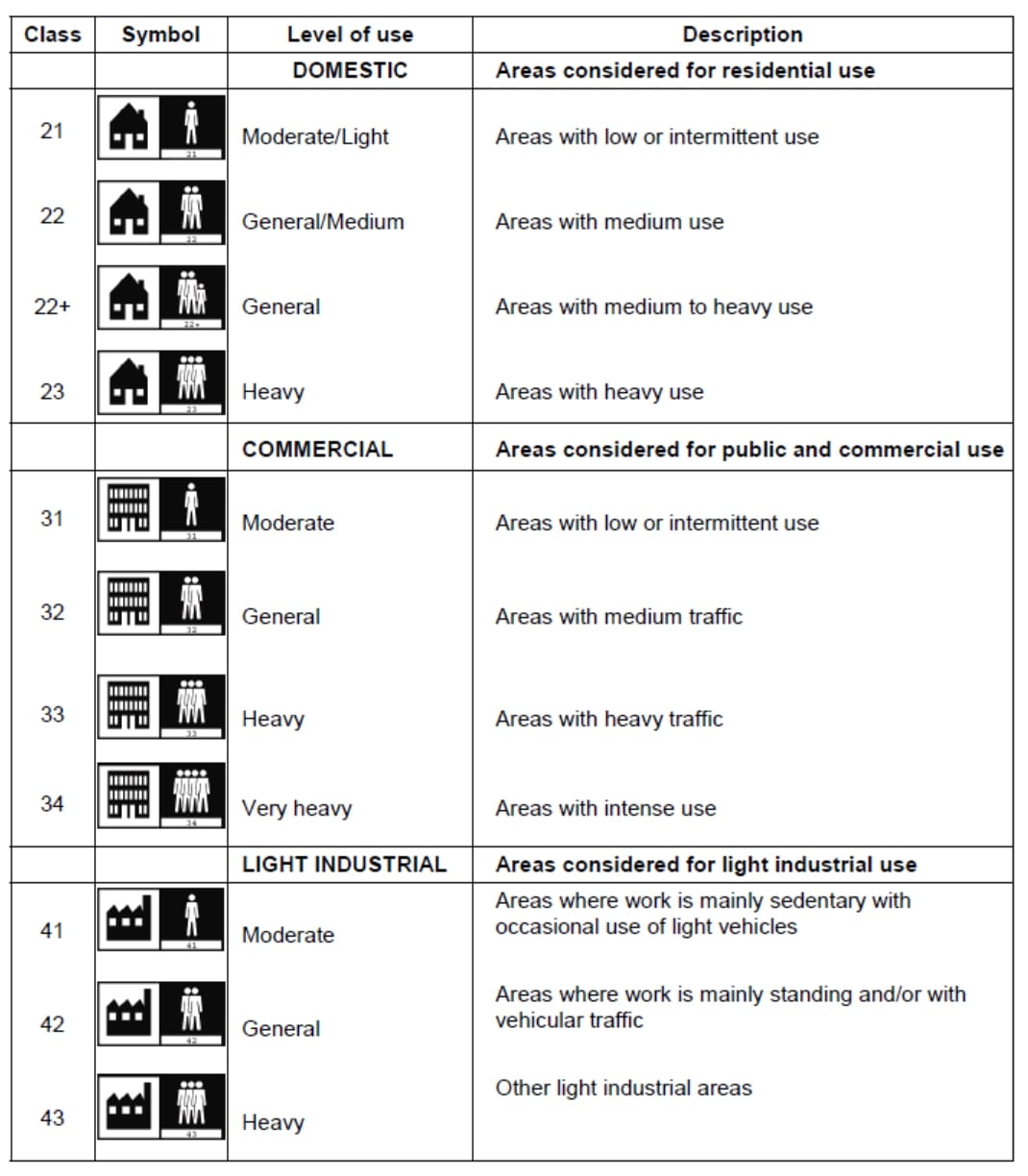Introduction
When it comes to selecting the perfect floor covering for your commercial or industrial project, one crucial factor stands above the rest: classification grade. It’s the key to ensuring your space not only looks great but also withstands the test of time. In this article, we’ll delve into the importance of classification grades and provide recommendations that will help you make the right choice for your specific needs.
Understanding Classification Grades: Standards: EN685 / ISO 10874
Before we dive into the details, let’s get familiar with the classification system defined by international standards such as EN685 and ISO 10874. These standards establish a clear classification system for various floor coverings, including resilient, textile, and laminate options. This system is designed to simplify the decision-making process for manufacturers, specifiers, and consumers, guiding them towards selecting the most suitable floor covering for any given area or room.
Scope of the Classification System
This International Standard classifies floor coverings based on practical requirements, considering factors like the intended area of use and the level of intensity.
Choosing the Right Classification Grade
The heart of the matter lies in selecting the appropriate classification grade for your project. To make this decision, you need to consider the practical requirements for your space and the intensity of use it will experience. Here are some key recommendations to keep in mind:
- Commercial Buildings: Aim for Grade 33 or 34 For commercial buildings, where foot traffic can be substantial, it’s advisable to opt for floor coverings classified as Grade 33 or 34. These grades offer durability and longevity that can withstand the demands of busy spaces.
- Light Industrial Areas: Consider Grade 43 In light industrial areas, where the floor may face more extensive wear and tear, Grade 43 floor coverings are an excellent choice. They provide the necessary resilience to maintain their quality in such settings.
It’s essential to understand that these classifications serve as guidelines.
Conclusion
In the world of commercial and industrial spaces, the right floor covering can make all the difference. By paying close attention to classification grades and adhering to international standards, you can ensure that your chosen floor covering not only meets but exceeds your expectations for performance and longevity. So, the next time you embark on a flooring project, let classification grades be your guiding light, leading you to a floor that’s not only aesthetically pleasing but built to last.



